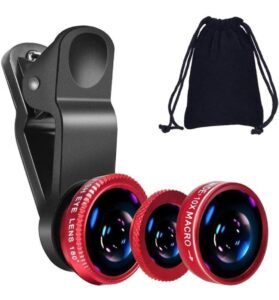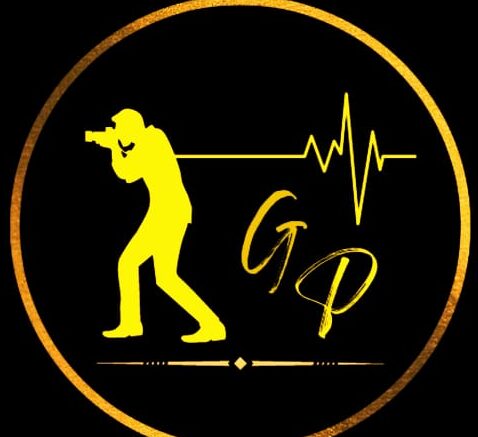ABOUT MACRO LENS

A macro lens is a type of camera lens designed for close-up photography, allowing you to capture highly detailed images of small subjects at a 1:1 or greater magnification ratio. These lenses are particularly popular among photographers who specialize in macro photography, which involves capturing subjects at a very close range, such as insects, flowers, jewelry, or other tiny objects. Here are some key characteristics and considerations when it comes to macro lenses in photography:
- Magnification: Macro lenses are capable of 1:1 magnification or greater, which means that the subject is reproduced on the camera sensor at the same size it appears in real life. Some macro lenses even offer higher magnification ratios, such as 2:1 or 5:1, which can capture extreme close-ups.
- Close Focusing Distance: Macro lenses are designed to focus at very close distances to the subject. This allows you to get physically close to your subject while maintaining sharp focus.
- Fixed Focal Length: Most macro lenses have a fixed focal length, often in the range of 50mm to 200mm. This means you can’t zoom in or out; instead, you move your camera closer or farther from the subject to adjust the composition.
- Sharpness and Detail: Macro lenses are known for their exceptional sharpness and the ability to capture intricate details of small subjects. They are optimized for close-up work and often produce images with minimal distortion and aberrations.
- Aperture Control: Many macro lenses have a wide maximum aperture (e.g., f/2.8 or f/3.5), which allows for creative control over depth of field. You can create a shallow depth of field to isolate your subject against a blurred background, or use a smaller aperture for greater depth of field to capture more of the subject in focus.
- Image Stabilization: Some macro lenses come equipped with image stabilization (IS) or vibration reduction (VR) technology, which can help reduce the effects of camera shake when shooting handheld at close distances.
- Specialized Features: Some macro lenses have additional features such as a focus limiter switch, which restricts the focusing range to speed up autofocus, or a built-in ring light or LED illuminator to enhance lighting when shooting in close quarters.
- Compatibility: Macro lenses are available for various camera systems, including DSLRs and mirrorless cameras. Be sure to choose a lens that is compatible with your camera’s mount.
- Tripod Use: Macro photography often requires a stable platform, and using a tripod is common to ensure precise focus and minimize camera shake, especially when using narrow apertures.
Macro photography can be a fascinating and rewarding genre, as it allows you to explore the intricate details of the world around you. Whether you’re capturing the delicate patterns on a butterfly’s wing or the texture of a flower petal, a macro lens is an essential tool for getting up close and personal with your subjects.
 How to use macro lens
How to use macro lens
Using a macro lens in photography opens up a world of close-up and highly detailed image capture. Here are some steps and tips on how to use a macro lens effectively:
- Select the Right Lens: Ensure you have the appropriate macro lens for your camera system. Different brands and camera models have their own macro lens options. Common focal lengths for macro lenses are 50mm, 60mm, 90mm, and 100mm, but longer focal lengths like 150mm or 200mm can offer more working distance from the subject.
- Set Your Camera to Manual or Aperture Priority Mode: Macro photography often requires precise control over your camera settings. Manual mode allows you to control both aperture and shutter speed, but Aperture Priority (A or Av) mode can be convenient for controlling depth of field while letting the camera adjust the shutter speed.
- Use a Tripod: Macro photography is highly sensitive to camera shake, even the slightest movement can result in blurry images. Mount your camera on a stable tripod to ensure sharp photos. Consider using a remote shutter release or a timer delay to further reduce camera shake when taking the shot.
- Set a Narrow Aperture: To achieve a greater depth of field (more of the subject in focus), use a narrow aperture (higher f-number like f/11 or f/16). This helps capture intricate details throughout your subject.
- Focus Manually: While some macro lenses have autofocus capabilities, macro photography often requires precise manual focusing. Move your camera or the subject back and forth slightly to find the focus point, and use the lens’s focus ring to fine-tune focus.
- Use Adequate Lighting: Good lighting is essential for macro photography. Natural light can work well, but you might need additional lighting sources, such as a ring flash or an off-camera flash, to illuminate your subject evenly and reduce shadows.
- Control Your Composition: Pay attention to composition, as macro photography is not just about getting close but also about creating visually appealing images. Consider factors like background, framing, and angles to make your subject stand out.
- Maintain a Steady Hand: If you’re shooting handheld, try to stabilize yourself by leaning against a solid surface or using proper breathing techniques to minimize camera shake. Image stabilization in your lens or camera can also help.
- Experiment with Focus Stacking: For subjects with a lot of depth, like a stack of coins or a flower with multiple layers, consider using focus stacking techniques. This involves taking multiple shots at different focus points and then blending them together in post-processing to achieve a sharp, fully-focused image.
- Practice and Patience: Macro photography can be challenging, and it may take time to get the shot you want. Be patient, and don’t be afraid to experiment with different settings and techniques to achieve your desired results.
Remember that practice is key when it comes to macro photography. Experiment with various subjects, lighting conditions, and camera settings to develop your skills and create stunning close-up images with your macro lens.
